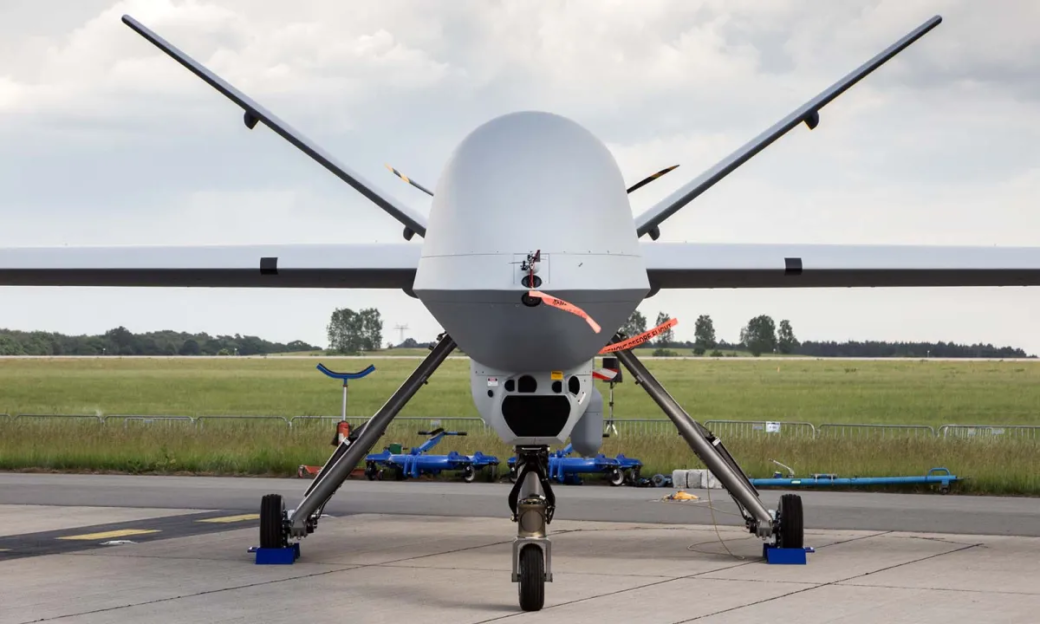Recent battlefield experience has sparked a debate on how best to deploy and configure high-cost drones like the MQ-9 Reaper

The US is reevaluating its approach to drone warfare, with strategic thinking divided between fielding a few highly capable but costly drones or instead using high-cost drones as command centers for swarms of low-cost drones.
The US Army is now actively seeking private industry partners to develop a large drone capable of performing multifaceted missions including reconnaissance, surveillance, security, attack, precision strike and intelligence collection, Breaking Defense reported.
The initiative, still in the planning stages, aims to enhance the army’s capabilities in large-scale combat operations by integrating advanced sensor technologies and precision-guided munitions, the report said.
The army’s desired unmanned aircraft system (UAS) should be able to operate at high altitudes, preferably above 30,000 feet, with a range of 500 nautical miles and short takeoff and landing (STOL) features.
The US Army’s request for information, open until July 7, reflects a willingness to consider various options, the Breaking Defense report said.
The move comes after a year of significant changes in the US Army’s aviation roadmap, influenced by lessons from the battlefield, particularly the ongoing conflict in Ukraine. Those changes are seen in the discontinuation of the Future Attack Reconnaissance Aircraft (FARA) program and a gradual reduction in the use of smaller drone fleets.
The US Army’s changing approach underscores the evolving nature of aerial reconnaissance and the increasing role of unmanned systems and space-based assets in gathering intelligence.
The US Army has yet to officially announce if the new drone program aims to address the capability gap left by FARA’s cancellation. Some analysts believe it may result in procuring more existing drones like the MQ-1C or developing new alternatives.
Successive US drone losses against Yemen’s Houthi rebels, where multi-million dollar drones have been killed by rudimentary air defense systems, may have forced the US to reevaluate its approach to drone development and deployment.
Such losses have triggered debates on how the US should develop and deploy its drones, with arguments swinging between quality, namely increasing survivability and capability, and quantity, where more expensive drones are relegated to command and control hubs for cheaper, more expendable drones.
This month, Business Insider reported that Houthi rebels have claimed responsibility for downing a US MQ-9 Reaper drone, marking the third such incident in May. Business Insider notes that the footage released by the rebels suggests the drone was virtually intact after being shot down in the Marib province of northern Yemen.
While the MQ-9 is considered expendable, its hefty price tag of US$30 million per unit raises cost-benefit questions about flying the drone in the theater. Houthi spokesman Yahya Saree stated the drone was targeted with a locally made surface-to-air missile during “hostile missions.”
Brandon Tseng, president of drone and software firm Shield AI, says the MQ-9 is “too expensive and too slow to regenerate to continue operating within range of surface-to-air missiles,” according to the Business Insider report.
“MQ-9 is a great aircraft, I’ve used it. But for the future fight, its role needs to be re-defined to quarterbacking intelligent teams of attritable aircraft,” Tseng adds.
Liam Collins, founding director of the Modern War Institute at West Point, says that the MQ-9 was designed in an era where US air supremacy was a given. He notes it was designed to carry a limited payload while maximizing loiter time, according to the Business Insider report.
Collins notes that the US didn’t invest in maneuvering capability for the MQ-9 because it was considered unnecessary at the time of development. He says this has made the MQ-9 vulnerable in an environment characterized by large-scale combat operations.
However, C Mark Brinkley, senior director of communications of General Atomics Aeronautical Systems, stated in an October 2023 C4ISRNET article that such combat losses are to be expected.
Brinkley says advocates of replacing the MQ-9 with cheaper, less capable alternatives would need a highly advanced AI that costs billions of dollars to be tactically relevant.
He mentions that even if AI allows 50 or more drones to operate as a swarm, their payload and endurance would only be 25% of the MQ-9s’.
Instead of ditching the MQ-9 for cheaper alternatives, Brinkley recommends integrating air-to-air missiles and early warning radar to increase the drone’s survivability and add new capabilities.
The US has pursued diverging efforts to reinvent its drone warfare capabilities, with each reflecting different approaches such as increasing survivability and capability or increasing the number of attritable drones.
In terms of increasing survivability and capability, The Aviationist reported in May 2024 that the MQ-9 will receive significant upgrades to enhance its survivability.
According to the report, General Atomics Aeronautical Systems is collaborating with Shift5, a company specializing in onboard cyber anomaly detection and predictive maintenance, toward those ends.
According to The Aviationist, Shift5’s platform will be integrated into the MQ-9A Reaper, providing real-time operational and cybersecurity insights.
Work is also underway to develop an Airborne Battlespace Awareness and Defense (ABAD) capability for the MQ-9A, which includes a new pod designed to detect and counter radio frequency (RF) and infrared (IR) threats.
Air & Space Forces Magazine reported in September 2023 that the US Air Force Special Operations Command (AFSOC) is exploring the potential of MQ-9 Reaper drones to act as central command units for a network of smaller unmanned aerial systems.
The initiative, part of the adaptive airborne enterprise (A2E) project, aims to transform MQ-9s from their conventional intelligence and strike roles into dynamic control centers, the report said.
The Air & Space Forces Magazine report says these centers would manage a fleet of lightweight drones, creating an extensive sensing grid to support joint force operations.
This approach would extend the network’s reach, potentially spanning hundreds of miles, to provide a robust communications pathway for special operations forces in deep battlefields.
Air & Space Forces Magazine notes that the A2E project also addresses the outdated and manpower-intensive infrastructure of the MQ-9’s architecture, which has remained unchanged since the 1990s.
The report says that the project aims to reduce the personnel required to maintain a single MQ-9 orbit from over 150 to a more efficient number, allowing for a greater number of MQ-9s to be deployed.



